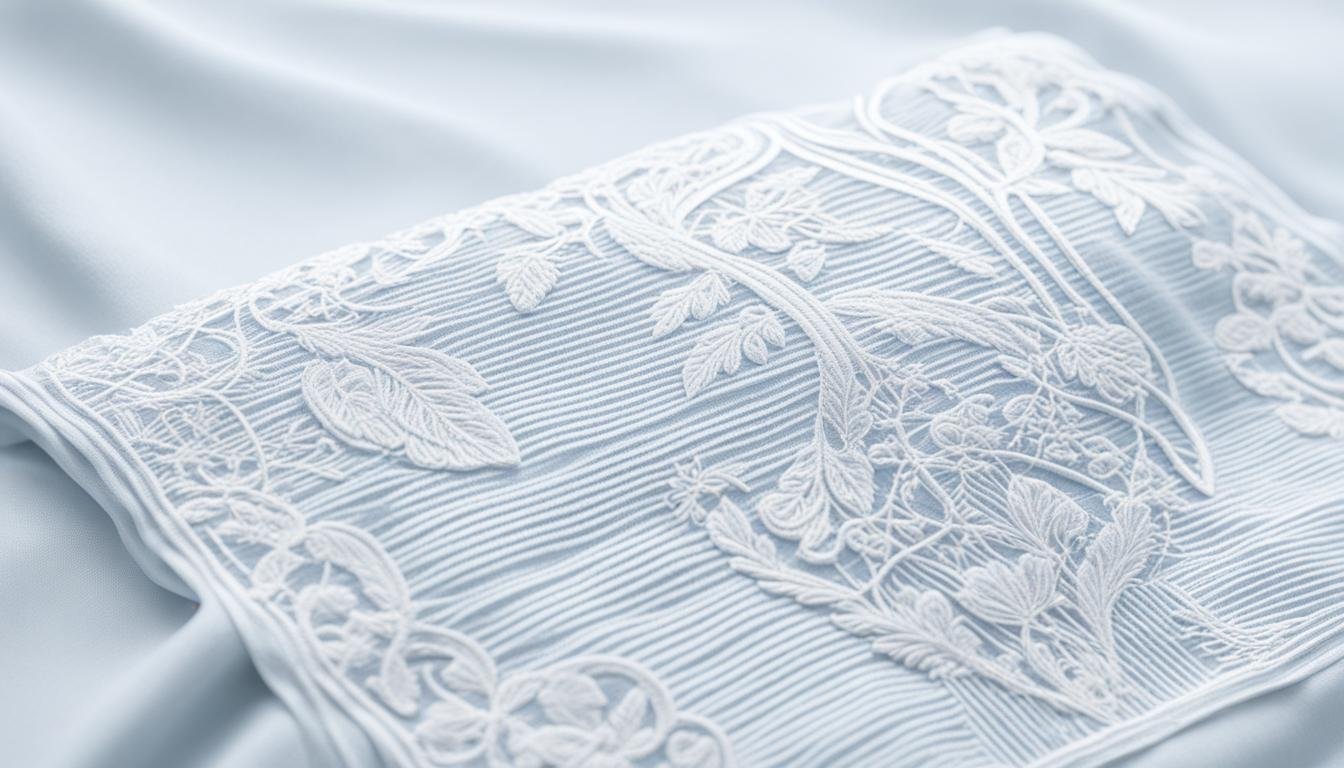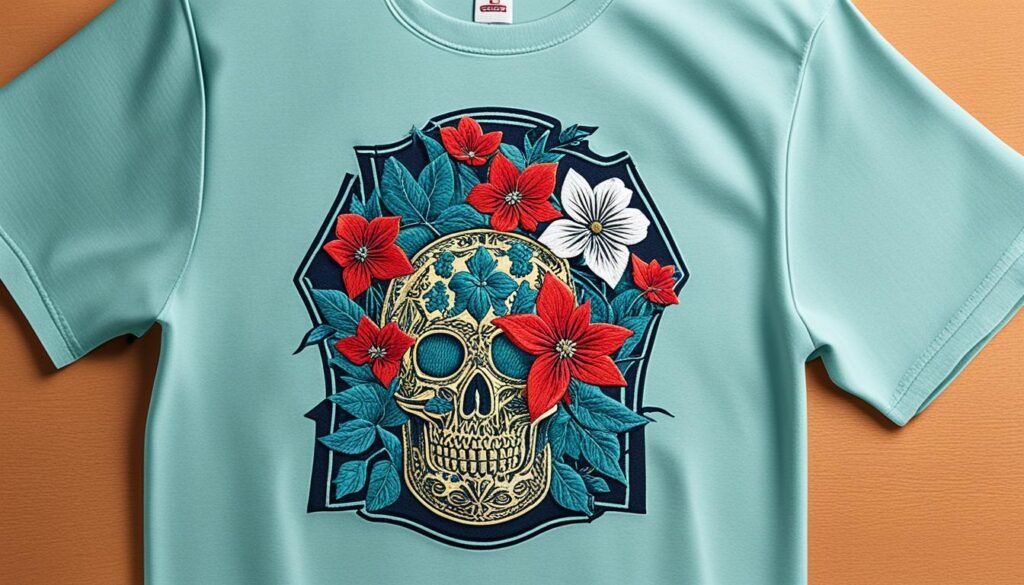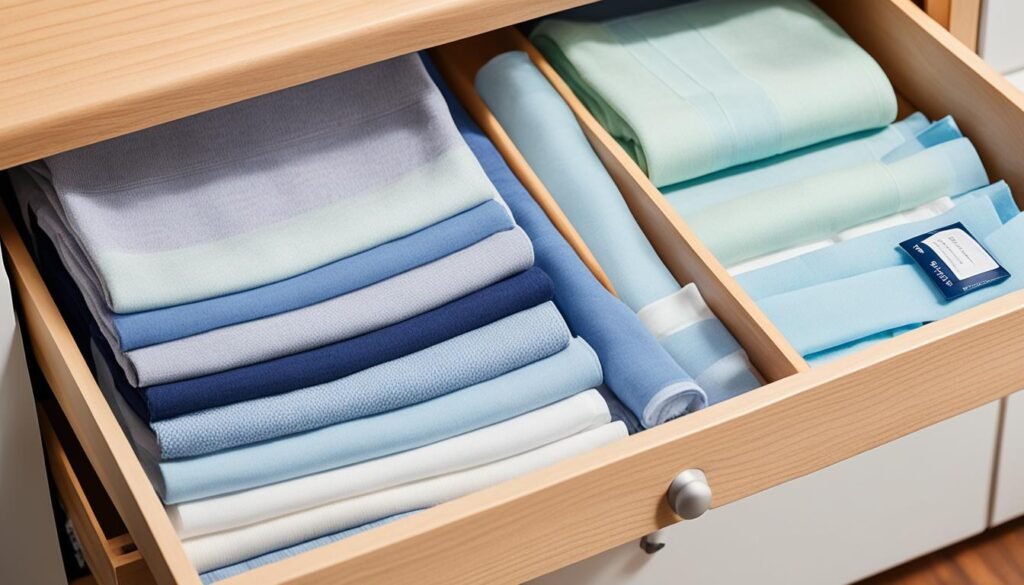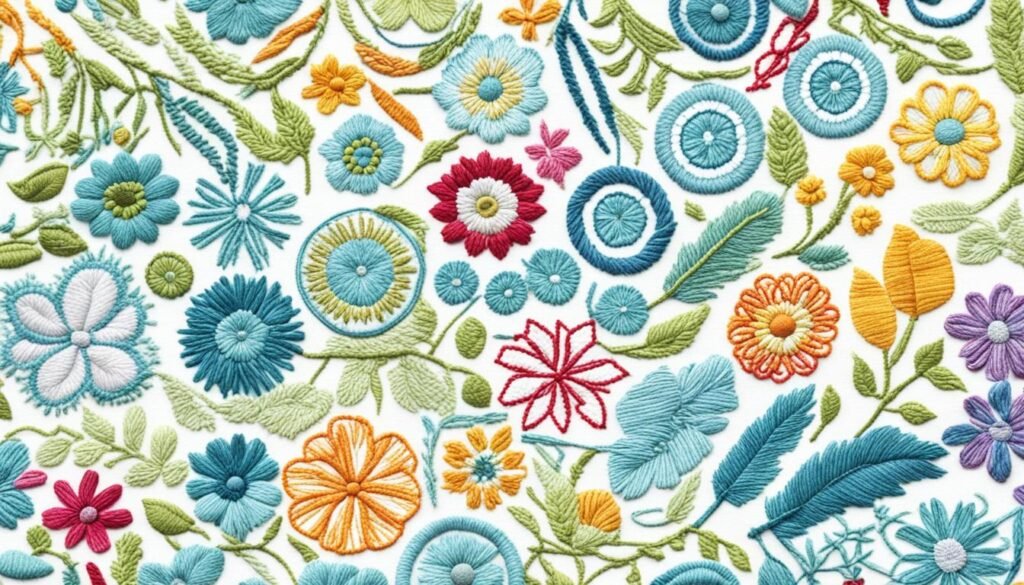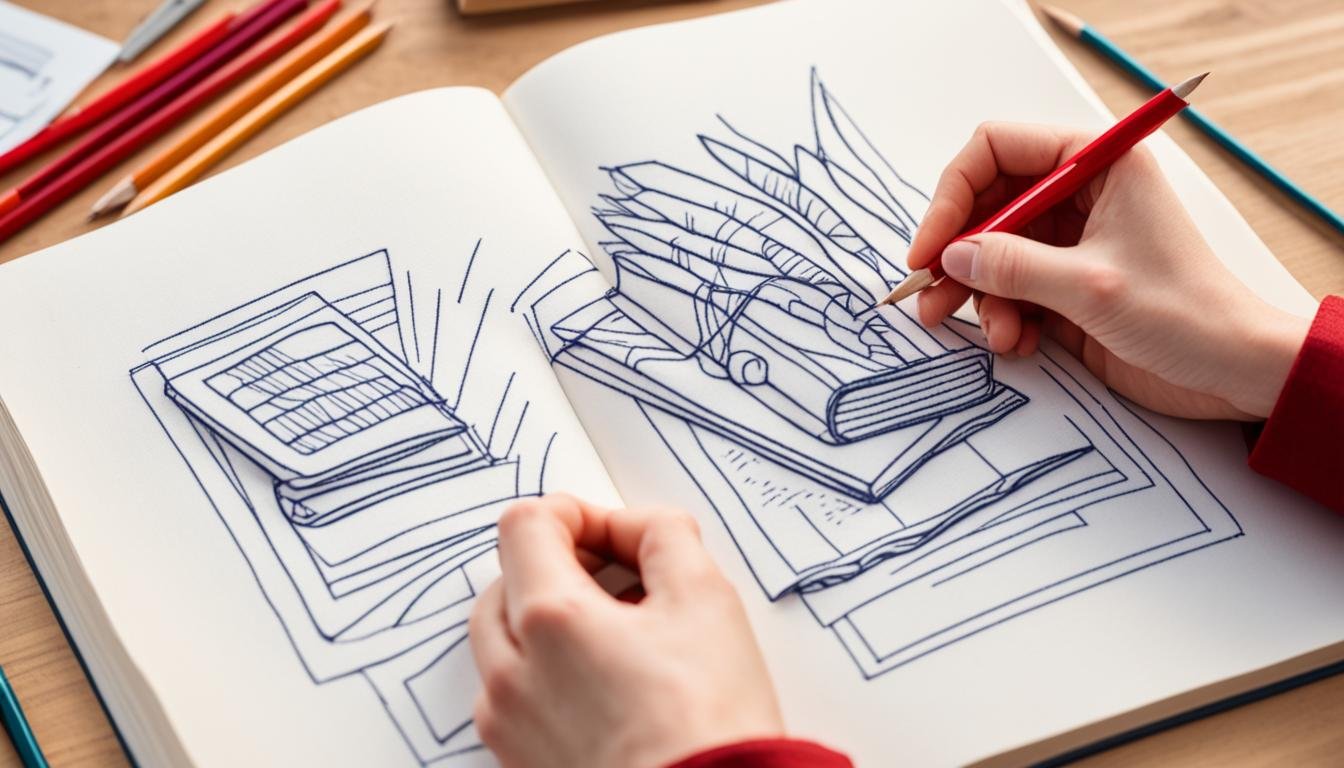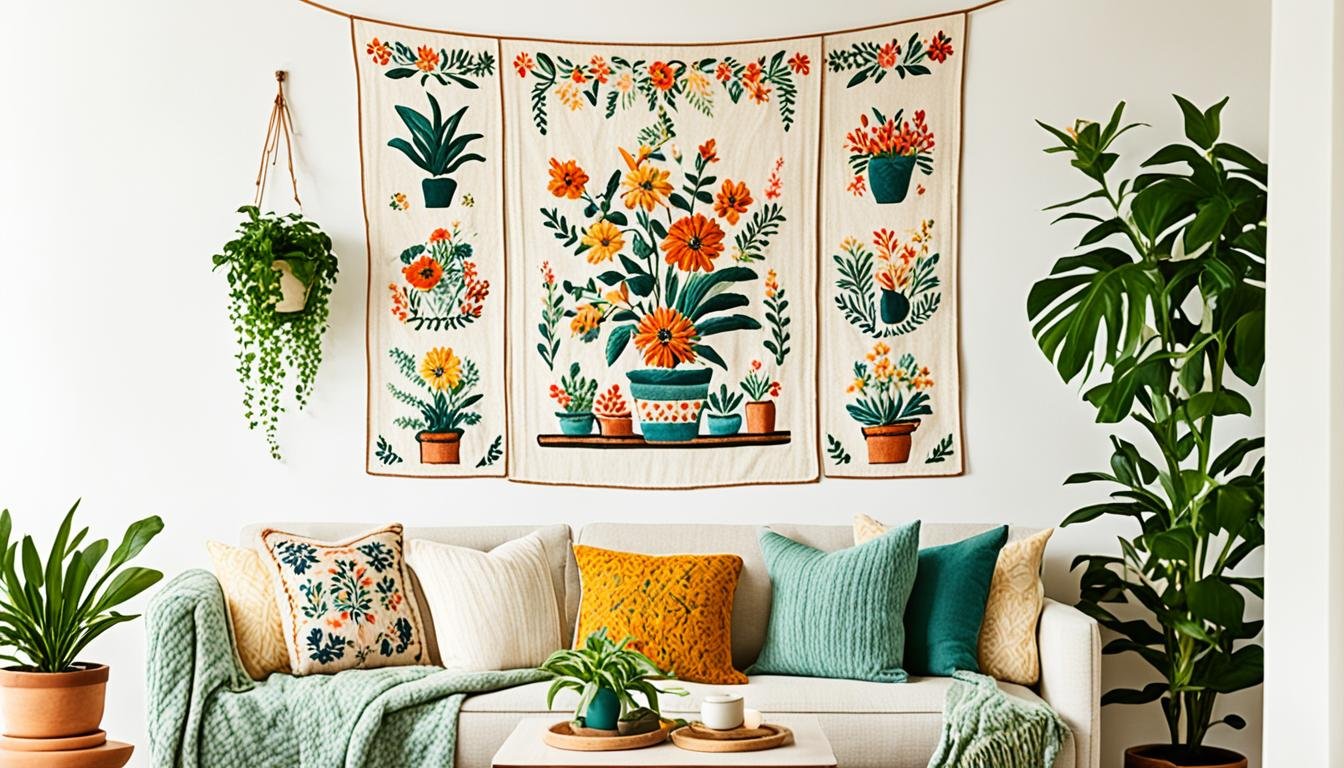Ever wondered how to protect embroidery on clothing while keeping it looking fresh? The secret lies in choosing the right backing. These materials not only safeguard your designs but also prevent threads from scratching your skin.
Options like Sulky Tender Touch and Pellon Shape-Flex ensure your embroidery remains intact through every wash.
With the right backing, your garments can withstand daily wear while maintaining their beauty.
Table of Contents
ToggleKey Takeaways
- Choosing the right backing keeps your embroidery looking good.
- The Sulky Tender Touch Stabilizer stays soft and in place, even after washing.
- But the Cloud Cover Stitch Stabilizer might fall off the first time you wash it.
- Pellon SF 101 Shape-Flex and Pellon 931TD Fusible Midweight are strong choices. They keep their shape well.
- Backing also protects your skin from rough threads, making your clothes more comfy to wear.
Understanding Embroidery Backing
Embroidery backings can feel overwhelming with so many choices. Still, picking the right one and putting it on your project can make things easier. It also makes your embroidery look better.
Types of Backing Materials
There are four main types of embroidery backings: cut-away, tear-away, wash-away, and heat-away. Each type is good for different materials and needs:
- Cut-Away Backing: Good for stretchy fabrics like knits. It stays connected well and lasts long.
- Tear-Away Backing: Best for firm materials. It keeps the shape during embroidery and comes off easily.
- Wash-Away Backing: Use it for projects where you don’t want leftovers. It dissolves in water.
- Heat-Away Backing: For making patches that can stand alone. It goes away when you apply heat.
How to Choose the Right Backing
To find the right backing, look at the fabric and design. Generally, woven fabrics are stable and need tear-away backing. On the other hand, knit fabrics are stretchy and need cut-away backing.
The type of design also affects your choice. Dense designs need thicker backings. Open designs that are less packed ask for lighter backings to keep the fabric from stretching.
Brands like Sulky Tender Touch and Cloud Cover Stitch offer many options. You should think about texture and how well the backing sticks. This helps keep your clothes stable but still comfy and looking good.
Applying Backing to Embroidered Designs
Putting the backing on right is key to taking good care of your embroidery. Often, you use an iron to attach the backing. This keeps the project comfy and looking nice.
- Preparation: First, cut the backing to be a bit bigger than your design area.
- Attachment: If the backing can be ironed on, do this with a warm iron.
- Stitching: Now, start embroidering with the backing there to support your stitches.
- Finishing: After you’re done, remove any extra backing. Tear-away backing should come off easily without hurting your stitches.
Choosing the right backing with the right fabric and design points in mind helps make great embroidery. This works for every project and keeps them looking top-notch.
The Importance of Fabric Selection
Choosing the right fabric is key for good embroidery. The fabric selection for embroidery affects the look of your project. It also influences how easy it is to stitch and how long it lasts.
It’s best to use natural fibers like 100% linen, silk, wool, and cotton. These materials are smooth and strong. They are perfect for many hand-embroidery projects.
Best Fabrics for Embroidery
100% linen, silk, wool, and cotton are great choices. They make stitching easy and prevent threads from moving.
For surface embroidery, pick a fabric with a full weave. This includes cotton poplin or quilting cotton. Such fabrics offer a solid base for stitching without any large gaps.
The weight of the fabric is also important. Heavy fabrics work well for thick designs. Lightweight fabrics are better for delicate work.
Challenges with Knit Fabrics
Knit fabrics can be tricky to work with. They need special care in embroidery care tips. Their stretchiness calls for unique preparation to keep the embroidery looking good.
Using stabilizers or interfacing can prevent stretch fabrics from warping. An added backing like Poly Mesh/No-Show Backing increases the stability. This backing is invisible under thin, light-colored fabrics.
Spending time to choose the right fabric and prepare it well is worthwhile. It can make your embroidery projects look beautiful and last longer. With the right fabric choice and care, even tough fabrics can lead to amazing and durable designs.
Washing Embroidered Clothes
It’s very key to wash embroidered clothes right to keep them nice for long. By doing a few important pre-washing steps, you can steer clear of issues like stains and fabric harm easily.
This ensures the beautiful designs stay intact. Let me show you a simple way to wash them without worry.
Pre-Washing Steps
It’s vital to do some steps before washing. Always test in a hidden spot to check if colors will stick. You may face tough spots, like food bits or oil from sewing parts. Try to remove them right away with a gentle soap. Handwashing helps a lot with this.
Washing Methods for Delicate Embroidery
Easier-to-damage materials like rayon need a soft handwash. Avoid tough cleaners like bleach to keep the fabrics safe. Let’s go over how to do this kind of wash:
- Fill a basin with cool to lukewarm water (around 30 degrees Celsius) and add a small amount of mild detergent.
- Submerge the embroidered garment and gently swish the water around to loosen any dirt or debris.
- Rinse thoroughly with cool water to remove all detergent residues.
- Lay the garment flat on a clean, dry towel, and roll up the towel to soak up excess water.
- Gently reshape the item and lay it flat to dry naturally, avoiding direct sunlight which can cause fading.
If your item is made of polyester, it can handle a bit more wash and dry pressure.
But, still, skip the high heat. Dry cleaning works well for fancy pieces or things you want to keep looking new. Those cleaners use special liquids to clean without water.
Stick to these clean-up steps to keep your embroidered clothes looking as good as new. They’ll keep their color and beauty for many years.
| Fabric Type | Washing Method | Tips |
|---|---|---|
| Polyester | Machine Washable | Use laundry bags, turn garment inside out |
| Rayon | Handwash Only | Avoid bleach and peroxide |
| Silk | Handwash Gently | No harsh chemicals, delicate handling |
| Wool | Handwash Gently | Avoid heat, prevent felting |
| Mixed Fabrics | Depends on Majority Content | Follow specific care instructions |
Preventing Embroidery Fading
Making embroidered clothes last longer takes a few steps. Using threads that don’t lose color easily is key. Colorfast threads stay bright and don’t run when washed. Always check if the colors stay before you wash your embroidered item. This prevents any surprises.
Using Colorfast Threads
Colorfast threads keep your embroidery looking good longer. Pick threads that say they are colorfast. They stay vivid even after many washes. This matters a lot for items you wash often.
| Thread Type | Colorfastness |
|---|---|
| Cotton | Moderate |
| Polyester | High |
| Rayon | Low |
| Silk | High |
Washing in Cold Water
Embroidered clothes should be washed in cold water. Cold water keeps threads and colors from bleeding. Turning the cloth inside out helps too. It protects the embroidery. Use a gentle detergent and a soft wash cycle for best results.
Air Drying Embroidered Garments
Drying clothes in the air is best for embroidery. The dryer’s heat can harm the threads and fabric. Lay your clothes flat when drying them. Keep them away from the sun to avoid fading. This simple method keeps your embroidery looking new.
Proper Embroidery Cleaning Methods
Cleaning your embroidery items well is very important. This keeps them looking good for a long time. I’ll show you how to take care of your hand- or machine-embroidered pieces. This guide will make sure your items stay bright and in good shape.
For white linen with embroidery, some stains are easy to handle. Use Biz at first. If that doesn’t do it, boiling water with cream-of-tartar works well, but be careful handling it.
Drying dishtowels and tough items in the dryer is okay. But, delicate embroideries should be dried flat. Or, you can hang them. When you iron, cover the embroidery with a soft, white cloth. This protects your stitch work. Some like to use steam for ironing. Others don’t. But using a cloth always helps.
If your embroidery is very textured, don’t iron the front directly. This can mess up the stitches. Put soft cloth layers on your ironing board. This helps keep your work from getting squashed.
Starching can be good for napkins and linens with embroidery that you use a lot. It protects from dust and stains. But if you store them often, don’t starch. Starch can cause hard-to-fix creases and stains when it’s stored.
Storing your embroidery right is crucial. Don’t fold them; lay them down or roll them. Use acid-free cardboard tubes with tissue paper. Don’t store in plastic. It can cause mildew and bad smells. Archival boxes or lined drawers are best. If you use wooden drawers, line them with white tissue paper or linen. This stops fabric stains.
Here’s a simple table with important tips for cleaning and storing embroidery:
| Cleaning Method | Recommended Action |
|---|---|
| Tough Stains | Biz for white linens or cream-of-tartar in boiling water |
| Drying | Lay flat or hang finer projects; dryer for dishtowels |
| Ironing | Use clean, soft white towel; cover embroidery |
| Starching | For frequent use, avoid for storage |
| Storage | Lay flat or roll on acid-free tubes; avoid plastic |
Following my guide will help your embroidered items last. Proper cleaning and storage keep them beautiful. They will look as good as when you first made them.
Storage Tips for Embroidered Clothing
Keeping your embroidered clothes safe starts with the right storage. Use proper materials and ways to keep your items looking good for a long time. Here are some easy embroidery care tips to save your special clothes.
Using Acid-Free Materials
For storing your embroidered clothes, pick acid-free stuff. Things like acid-free tissue paper or special bags are key. They keep your clothes from turning yellow or getting ruined. For safeguarding embroidered garments, this step is very important.
Rolling vs. Folding
Rolling or folding your embroidered items matters a lot. Rolling works well for big things like linens. Do it around an acid-free tube and put it in a muslin sleeve. This way, your clothes keep their shape and avoid damage.
- Rolling: Ideal for large items like tunics and bedding. Use acid-free tubes and muslin sleeves.
- Folding: If space is limited, fold carefully, using acid-free tissue paper to cushion the embroidery and minimize creases.
Extending Embroidery Lifespan
We love our embroidered clothes because they’re special and detailed. So, we must take steps to keep them looking good for a long time. This means both extending embroidery lifespan and preserving embroidery quality.
Avoiding Direct Sunlight
Direct sunlight can make colors fade and hurt the fabric. To keep embroidered items safe, keep them in dark places. When you show them, use glass that protects from the sun. This will help a lot in extending embroidery lifespan and keeping colors bright.
Ensuring Proper Airflow
Mold and dirt can ruin your fabric and threads. Stop this by letting air flow around your items. Don’t put them in air-tight places. Use fabric bags or special boxes, especially in humid spots. This way, you help in preserving embroidery quality.
By using these tips, like no direct sunlight and good airflow, you’ll do a lot to care for your embroidered items. They will stay beautiful for a long time.
Choosing Embroidery Stitches for Clothing
When you pick stitches for clothes, think about how long they’ll last and if they fit the fabric. It’s important they stay strong, even after many washes. This embroidery maintenance guide will steer you right in these choices.
Stitches that Hold Up Well
For clothes, you need stitches that stick tight. Here are some top stitches for your embroidery needs:
- Back Stitch: Makes a durable, solid line.
- Split Stitch: Great for outlines and needs flexibility.
- Chain Stitch: Shows up well with its textured line.
- Satin Stitch: Perfect for smooth filling of big areas.
About 45% of clothing projects choose these flat, short stitches for, guess what, washability. Smart move, right?
Avoiding Delicate Stitches
Fragile, loop-making stitches are a no-go on clothes. Here are some to dodge:
- French Knots: They can come loose when you wash them a lot.
- Lazy Daisy: Loops might snag on stuff.
- Spider Web Stitch: Snags and loses shape.
- Open Chain Stitch: It’s not tough enough for daily wear.
Picking strong, reliable stitches keeps your embroidery looking good for a long time. As any embroidery maintenance guide would say, avoiding weak stitches is crucial for tough, lasting embroidery.
Want a peek at how stitches compare in durability? Here’s a table:
| Stitch Type | Durability | Common Use |
|---|---|---|
| Back Stitch | High | Outlines |
| Split Stitch | High | Outlines, Flex Areas |
| Chain Stitch | Medium | Textured Lines |
| Satin Stitch | High | Filling Large Areas |
| French Knots | Low | Detailing |
| Lazy Daisy | Low | Flower Petals, Leaves |
| Spider Web Stitch | Low | Circular Designs |
| Open Chain Stitch | Medium | Decorative Lines |
Knowing how each stitch stacks up helps in choosing smart for clothes embroideries. Use the right stitch to keep your designs looking great for years to come.
How to Protect Embroidary on Clothing
Making an effort to take care of embroidery on our clothes is key. Doing so keeps the designs looking as good as new. Here’s what you can do:
Best Practices for Everyday Wear
- Minimize Friction: Try not to let the embroidery rub against rough surfaces. This will keep the threads from wearing out.
- Secure Loose Threads: If you spot any loose threads, tie them up. This stops them from getting pulled and torn.
- Use Protective Barriers: Use products like Cover-A-StitchTM to shield embroidery from direct skin contact. It protects the design.
Techniques to Safeguard Embroidery
There are smart ways to make embroidered items last longer. Let’s check them out:
- Hand Washing Embroidered Clothes: Wash delicate items by hand. Use cold water and a gentle detergent like Woolite. This keeps the stitches safe.
- Choosing High-Quality Materials: Pick strong floss like DMC. Also, use fabrics like cotton that last long. This ensures your design stays looking good for longer.
- Stabilize Your Stitching: Adding a backing to your embroidery helps. It protects against wear and tear. And, it keeps stitches from coming loose.
- Proper Storage: Store your items in garment bags made of nylon or PVC. 3 out of 5 people say this method works best to keep their clothes from getting damaged.
| Task | Recommendation |
|---|---|
| Washing Temperature | Cold Water |
| Hand Washing Time | Separately with Detergent |
| Spin-Drying Duration | About 10 Minutes |
| Ironing Temperature | Low Temperature |
| Drying Mode | Low Heat Mode |
Follow these steps to wash and care for your embroidered items. By doing so, you keep the designs looking great for a long time.
Final Thoughts
Embroidery makes clothes look great when properly cared for. To protect embroidery on clothing, consider the fabric, backing, and stitches.
Use gentle washing methods, such as washing at 30°C, and choose tear-away backing for hoodies or cut-away for t-shirts.
Slow down your embroidery machine and secure the fabric with clips. Avoid the dryer, especially with delicate fabrics like rayon or cotton. With these tips, your embroidered clothes will stay beautiful for years.
For specialized help, contact professionals like Crystal Custom Embroidery at 75305-76197.
FAQ
What are some embroidery care tips for clothing?
For your embroidered clothes, be gentle. Use soft washing methods and air dry. Always use a good backing like Sulky Tender Touch or Pellon.
How can I prevent embroidery from fading?
To keep colors bright, use special threads. Wash in cold water. Don’t put them in direct heat when drying.
What is the best way to wash embroidered clothes?
Use mild soap and gentle methods to wash them. Stay away from harsh detergents. Treat them with care to avoid pulling on the threads too much.
How do I choose the right backing for my embroidery projects?
Choose the right backing by the fabric’s weight and how stable you want the garment. Consider Sulky Tender Touch, Cloud Cover Stitch, or Pellon for support.
What fabrics are best suited for embroidery?
Cotton poplin, denim, and linen work well for embroidery. Knit fabrics need extra care because they stretch.
What pre-washing steps should I take for embroidered clothes?
Before wearing, pre-wash them gently. Use mild soap. This will keep your delicate embroidery safe.
How do I properly store embroidered clothing?
Use acid-free materials to store them. Rolling is better than folding. This helps prevent wrinkles and damage.
How can I extend the lifespan of embroidered garments?
Keep them out of direct sun. Let them have good air flow. Do not store in airtight places.
What embroidery stitches are best for clothing?
The best stitches are small and strong. They stick well without pulling or coming loose from the fabric.
What are the best practices for everyday wear of embroidered clothing?
Don’t wear them where they could get snagged. Think about adding stabilizers to areas that get a lot of wear. This will protect your embroidery.
